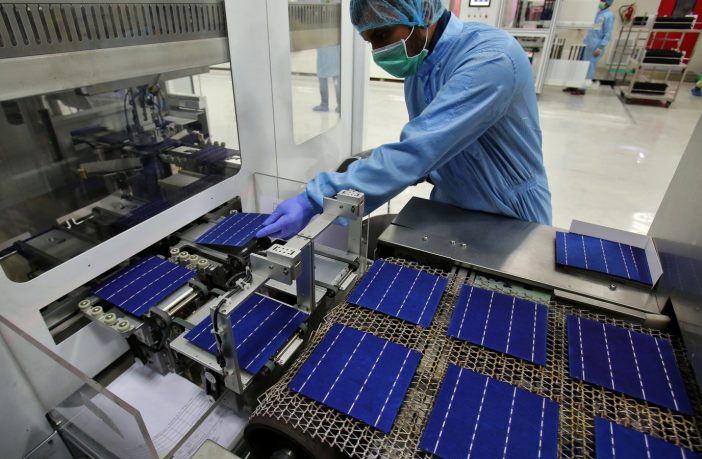- Within the framework of a new European H2020 project, nine research institutes and eight industrial partners across the whole value chain are collaborating on innovative solutions to produce silicon photovoltaic (PV) modules with higher performance, lower cost and better environmental profiles compared to commercially available modules.
- The HighLite project, coordinated by imec, a partner in EnergyVille, aims to substantially improve the competitiveness of the EU PV manufacturing industry by demonstrating new production solutions on pilot-line-level.
Solar energy is the fastest growing form of renewable energy generation and it is quickly becoming the cheapest source of electricity both in the EU and worldwide. The EU PV manufacturing industry has recently faced strong foreign competition, which has led to a dramatic reduction of its production capacity in Europe. Most of the modules that are currently being manufactured within the EU are based on imported solar cells, mainly crystalline silicon solar cells with a high carbon footprint.
The challenge is to create more secure and sustainable supply chains for the EU PV market, while substantially improving competitiveness of the EU PV manufacturing industry to help regain a part of this fast-growing market. In order to produce cost-effective crystalline silicon modules with excellent environmental profiles (lower carbon footprint, enhanced durability, improved recyclability), there is a need for innovative manufacturing solutions, spanning the entire production chain.
That is why various European partners are joining forces in this 36-month project with €12.9 million funding from the European Commission. Within the HighLite project, a unique consortium of universities, research institutes, material/equipment suppliers, cell/module producers and engineering services companies are developing knowledge-based manufacturing technology, at both the cell and module level. To reduce the cost and carbon footprint, the project focuses on ultra-thin (down to 100 μm corresponding to about half of the current thickness) crystalline silicon solar cells. To improve performance and durability, the cells are being designed with so-called passivating contacts and advanced cutting-edge re-passivation techniques. Industrial tools will be developed to assemble these cut-cells into high-efficiency modules tailored for various applications, especially for integration into buildings, rooftops or vehicles.
The HighLite project was selected in the framework of the European Union’s Horizon 2020 program, under the ‘Increase the competitiveness of the EU PV manufacturing industry’ funding opportunity. In the framework of the three-year HighLite project, imec will closely collaborate with the University of Ljubljana, EPFL, CSEM, CEA-INES, ISC, ISFH, Fraunhofer ISE, TNO, PI-Berlin, Applied Materials, Henkel, IBS, 3D-Micromac, SoliTek, Valoe and Voltec.
“Taking profit of the unique strength of each partner and the available expertise in Europe in the field of crystalline silicon devices with passivating contacts, we can develop production solutions with higher performance, lower cost and better environmental profiles than those currently on the market,” says Loic Tous, project coordinator of HighLite and silicon PV team leader at imec/EnergyVille. “By demonstrating on pilot-line-level how the next generation silicon PV modules can be manufactured, the project aims at significantly improving the competitiveness of the European PV industry.”
This project has received funding from the European Commission’s Horizon2020 Program for research, technological development and demonstration under Grant Agreement no. 857793.
Author: GBA News Desk











